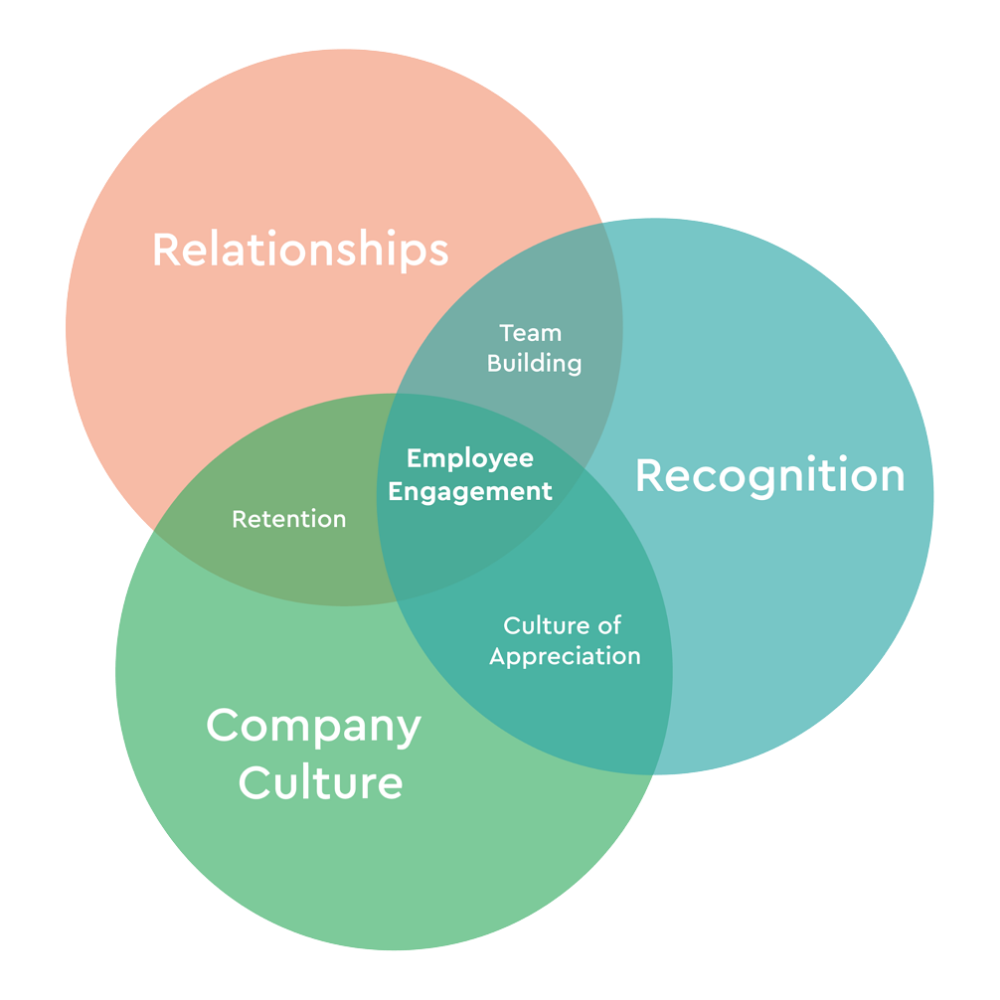Employee engagement has been getting a lot of attention recently. From the well-known Gallup survey to articles in Forbes and beyond, it’s a topic that has infiltrated the world of business. And for good reason, too.
Engaged employees have been shown to perform better, be less likely to quit, and be happier and more motivated. For companies, this translates into higher profitability with the same number of employees. It’s a win-win. But what is employee engagement?
What is Employee Engagement?
Employee engagement refers to the overall sense of enthusiasm, loyalty, and commitment employees feel working at a given company. Organizations with strong employee engagement have plenty of employees who come to work every day ready to give it their all and who are committed to contributing to the company mission. These employees will put in discretionary effort due to the genuine engagement with their work.
Three Components of Employee Engagement
There are many different interpretations of the term employee engagement. Our interpretation, however, includes several key components.
1. Relationships
There’s a good reason why Scoot’s purpose is helping people build stronger relationships. Connections with others directly feeds human happiness, and there’s no exception when it comes to workplace relationships.
Having strong relationships with coworkers is fundamental to employee engagement. It’s the connections with other people in the office who create a sense of loyalty to a particular company. Once someone has built authentic relationships with their teammates, they are more likely to want to keep their job. This leads to increased retention for the organization.
2. Recognition
Giving and receiving recognition is one of the most important components of employee engagement. In annual engagement surveys by TINYPulse, the percentage of employees who reported feeling valued at work has gone down year after year.
When it comes to feeling undervalued, a lack of appreciation is to blame. Many companies fail to implement a recognition program that encourages the exchange of appreciation and praise, which ends up costing them in the end. Employees who receive consistent, authentic recognition for their effort and accomplishments are more productive, more loyal, and generally happier. Not only do they feel good coming to work, but they take those good vibes home, improving their lives overall.
3. Company Culture
Without considering company culture, increasing employee engagement would be nearly impossible. The environment an employee comes into everyday has a huge impact on their ability to be genuinely engaged with their work.
Company cultures can be negative or positive, so creating a positive culture takes conscious effort. In particular, it’s a matter of creating a culture of appreciation where strong workplace relationships can thrive.
When a company’s culture is clearly defined, employees can easily determine where they fit in. This increases engagement because employees know how they are contributing to their organizations’ purpose. It also helps with branding and recruitment, which has become more important in modern times. Companies with a well-defined positive culture tend to attract hard-working, dedicated employees, which perpetuates the cycle of engagement.
In the cases of remote or hybrid teams, company culture will have to be reinforced and over-emphasized in order to keep everyone engaged and happy, even from a distance. Understanding and applying the 3 key elements of employee engagement can help you overcome some of the barriers of having a distributed workforce, without sacrificing your company culture.
How to Improve Employee Engagement
Employee engagement refers to the level of enthusiasm, commitment, and productivity in a company’s employees. There are many components that contribute to employee engagement, and some of the most important are company culture, relationships, and recognition. With a focus in these three areas, organizations can take themselves to the next level, benefitting customers, shareholders, and employees alike.
Wondering how to improve employee engagement at your company? You’re not alone. In fact, we’ve written quite a few pieces on this topic. Take a look at some of these related articles:
- 7 Remote Work Tips for Increasing Employee Engagement
- The Three Elements of Employee Engagement
- Increasing Employee Engagement
- 25 Ways to Boost Engagement in Your All-Hands Meeting
- How Social Bookends Can Save Virtual Employee Engagement and Retention
Scoot: More Engaging Virtual Meetings
Scoot is a new kind of virtual meeting platform that was designed for more engaging meetings, no matter where your team is located. Rather than being stuck in a grid of silent gray boxes, attendees can move around freely, from one conversation to the next, just like real life. There’s mingling, music and meeting, all in one platform.

Learn more about the Scoot platform, or contact us for a demo.

